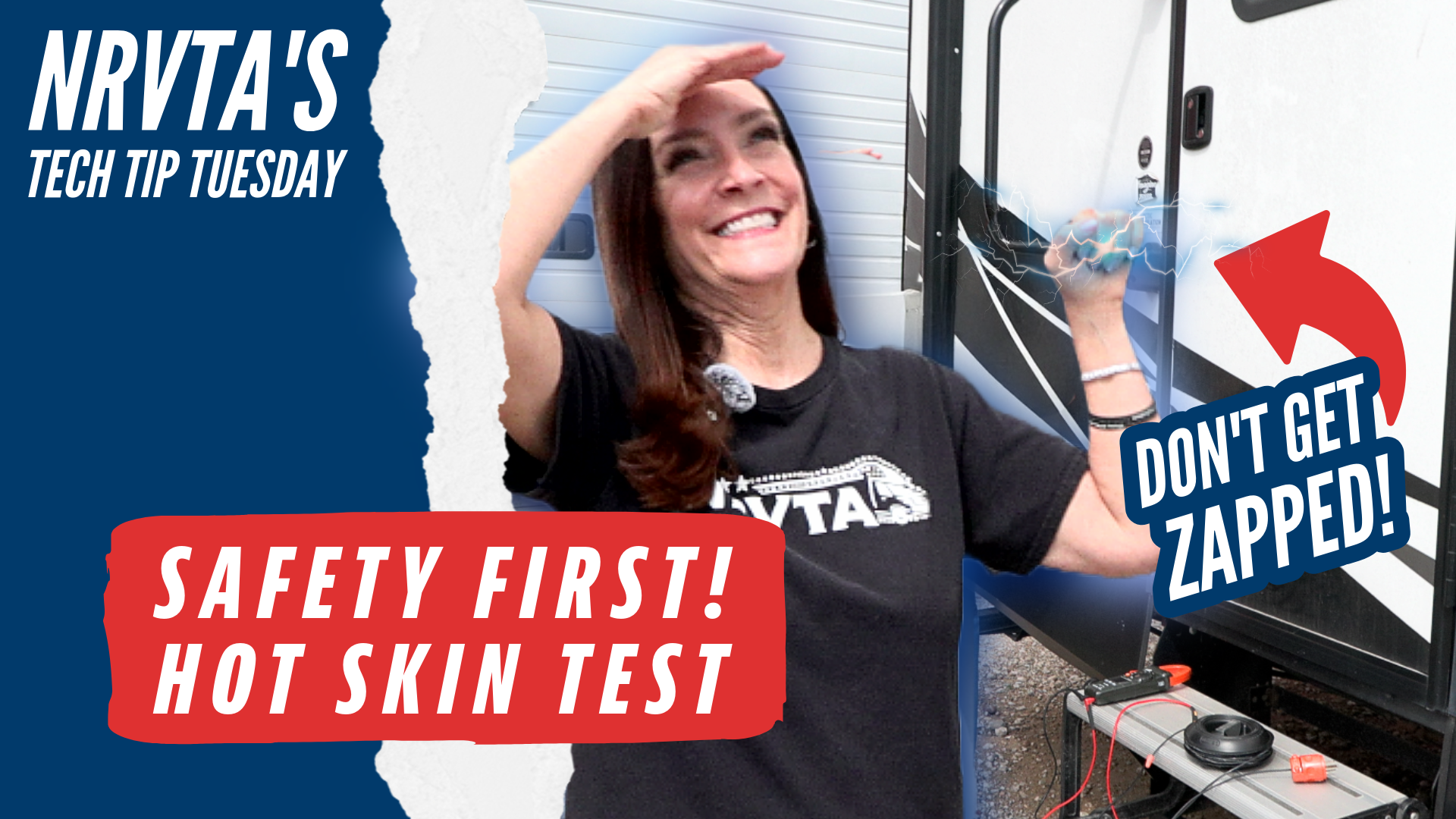Get your RV Technician Certification in as little as 5 weeks!

Welcome back to another Two-Minute Tech Tip Tuesday, brought to you by the National RV Training Academy (NRVTA)—the largest hands-on RV training facility in America. Whether you’re a weekend warrior or a full-time RVer, this safety tip could prevent a painful—and dangerous—surprise.
This week, certified RV Inspector and NRVTA instructor Brenda walks us through a critical RV safety test that every owner should know about: the Hot Skin Test.
What Is “Hot Skin” and Why Should You Care?
Most RVers have never heard the term hot skin, but it’s something you definitely want to understand. A hot skin condition occurs when your RV’s metal frame or chassis becomes energized with electrical current. In simple terms: electricity is flowing where it shouldn’t—and that current can shock you or your loved ones when they touch the metal while standing on the ground.
This hazard isn’t just a mild zap. In some cases, it can lead to serious injury or worse. That’s why both RV inspectors and technicians perform this test during every inspection—no matter the package level. And now, you can learn how to do it, too.
How the Hot Skin Test Works
The goal of the test is to detect dangerous voltage present on any exterior metal surface of your RV. Here’s a simplified breakdown of how Brenda performs the test:
Tools Needed:
- A length of 16- or 18-gauge wire (about 100 feet).
- A male plug with the ground pin only connected to the wire.
- A multimeter set to AC voltage.
- A willingness to walk around your RV touching all the metal bits!
Step-by-Step:
- Plug the ground wire into the 20-amp outlet on the campground pedestal.
- Connect the other end of the wire to the COM port on your multimeter.
- Set your multimeter to AC volts.
- Use the red lead to touch various metal components around the RV—steps, door handles, locks, awning supports, water heater screens, stabilizer jacks, and more.
- Check for any voltage reading.
Important Benchmark:
According to the National Electrical Code (NEC), any reading above 5 volts AC indicates a hot skin condition. If your multimeter shows 5 volts or higher—you’ve got a problem.
“But My RV Feels Fine Inside…”
That’s what makes hot skin so tricky. You may never feel a thing while inside the RV. That’s because the interior isn’t truly grounded. But step outside in socks or bare feet, and grab that metal door handle—and now you become the grounding path for stray current.
Scary, right? That’s exactly why this test is so important, especially at unfamiliar campgrounds or after electrical work.
What Happens If You Find a Hot Skin Condition?
If you detect voltage above 5V on any metal surface:
- Unplug your RV immediately from shore power.
- Don’t touch any exposed metal surfaces until the issue is resolved.
- Call a qualified RV technician or inspector to diagnose and fix the root cause.
Want to Learn More?
Whether you’re a hands-on DIYer or prefer to leave it to the pros, you’ve got options:
Learn to Test Yourself:
- Attend NRVTA’s Fundamentals Week, where students learn how to perform a hot skin test and many other hands-on diagnostics.
- Enroll in the Home Study Course and learn at your own pace.
Hire a Pro:
Not comfortable doing the test yourself? Visit RVHelp.com to use the Inspector/Technician Locator Tool and find a certified pro near you.
Final Thoughts
Hot skin is one of the least known but most dangerous electrical issues in the RV world. Performing this quick test can prevent accidents and give you peace of mind at every stop.
Remember: Safety first, always.
If you’re touching your RV, make sure your RV isn’t trying to touch you back—with electricity.
There’s your Tech Tip!
Brought to you by the National RV Training Academy. Stay safe, stay smart, and happy travels!
Get Registered Today!
Talk to a student advisor to learn more!